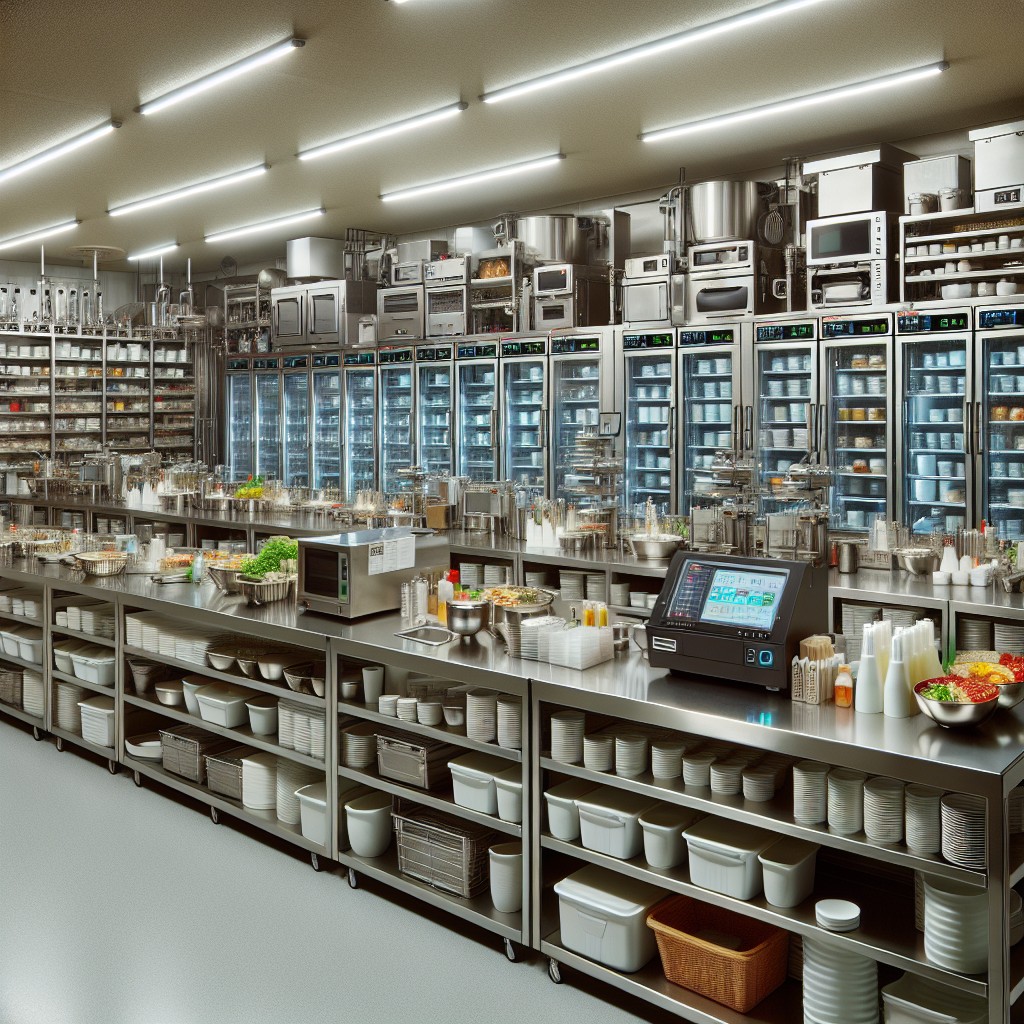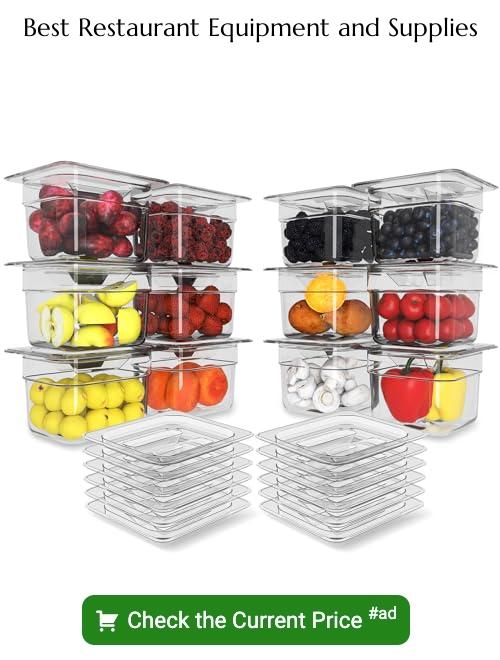Last updated on
Dive into the intriguing world of ghost kitchens, the revolutionary dining concept that’s quickly reshaping the landscape of the food industry by providing restaurant-quality meals sans the brick-and-mortar establishment.
Key takeaways:
- Ghost kitchens are commercial cooking spaces optimized for delivery-only meals.
- They focus on delivery, host multiple food brands, and rely on technology.
- Ghost kitchens operate in cheaper locations, have streamlined operations, and simplified menus.
- They offer cost benefits, flexibility, and agility for culinary experimentation.
- The future outlook is promising, driven by convenience and consumer preferences.
What's Inside
Definition of a Ghost Kitchen

At its core, a ghost kitchen is a commercial cooking space that’s optimized for delivery-only meals. Imagine a bustling, professional-grade kitchen, but without the attached dining area, waiters, or decor of traditional restaurants.
Here are some points to clarify the concept:
- Delivery-Centric Approach: The sole focus of these kitchens is to prepare food specifically for delivery. There’s no option for dine-in, which eliminates the need for an aesthetically pleasing dining space or front-of-house staff.
- Multiple Brands Under One Roof: Ghost kitchens often host several different food brands or virtual restaurants, allowing for diverse cuisine options to be prepared in a single location. This increases efficiency and maximizes the use of space.
- Technology Integration: These kitchens heavily rely on online ordering from food delivery platforms or apps, which streamline the ordering process.
- Location Flexibility: Without the need for high foot traffic, ghost kitchens can operate in industrial areas where rent is significantly cheaper than prime retail locations.
- Streamlined Operations: The focus on food delivery allows for a simplified menu, which can lead to more efficient inventory management and quicker preparation times.
By concentrating entirely on food preparation and delivery without the additional overhead of a traditional restaurant, a ghost kitchen can be a lean operation that responds dynamically to the rapidly growing appetite for home-delivered meals.
Operation Model of Ghost Kitchens and Differences From Traditional Restaurants
Ghost kitchens strip down the dining experience to its bare essentials: cooking and delivery. Unlike traditional restaurants, they eliminate the need for a dine-in space, which means no tables, no decor, and no on-site service staff. The focal point is efficiency, with these kitchens often housed in nondescript commercial warehouses or commissary kitchens.
The kitchen equipment and layout are optimized for food preparation and packaging rather than ambiance or customer foot traffic. With a lean operation, ghost kitchens can launch quickly and pivot menus based on data-derived insights into consumer preferences.
Food delivery platforms and mobile apps become significant allies for ghost kitchens, offering a direct line to the consumer without the brand needing an expensive high street presence. This relationship with technology enables them to dynamically respond to demand spikes, streamlining their operations during peak delivery times.
Ghost kitchens usually operate under a delivery-only model, or occasionally, offer pickup services without the overhead costs associated with traditional restaurant features. Some venues also host multiple brands under one roof, maximizing kitchen efficiency and diversifying the menu offerings without duplicating operational costs. This model allows for experimentation with culinary ideas with minimal risk, often responding faster to market trends than their brick-and-mortar counterparts.
The Profitability and Cost Benefits of Ghost Kitchens
Ghost kitchens strip back the dining experience to its digital core, slashing the traditional costs associated with running a restaurant. Without the need for a prime retail location, owners can set up shop in more affordable areas, reducing rent and associated overheads like decor, furniture, and large waitstaff teams.
Capitalizing on the trend towards delivery apps, these virtual establishments minimize front-of-house operations and invest heavily in kitchen efficiency. The streamlined process allows for quicker turnaround times, feeding the on-demand economy that has grown exponentially with consumers’ love of convenience.
By specializing in delivery-only services, ghost kitchens often operate multiple brands from a single kitchen space, maximizing the use of space and resources. This diverse brand approach taps into varied consumer tastes while keeping ingredient sourcing and inventory management centralized, leading to bulk purchasing discounts and lower waste.
In essence, the ghost kitchen model embodies operational agility, providing a fertile ground for culinary experimentation at reduced risk. Chefs can test new concepts or menus without committing to a full-scale restaurant launch, making the model inherently adaptive and potentially more profitable in the ever-evolving food industry.
Challenges and Benefits of Running a Ghost Kitchen
Navigating the new terrain of ghost kitchens comes with its unique set of hurdles. The absence of a storefront means operators must double down on digital marketing strategies to create visibility in a crowded online space. Building a robust online presence is essential, however, without tangible customer interactions, brand loyalty must be fostered through consistency and quality control in food preparation and delivery services.
On the logistics front, depending solely on delivery apps can mean relinquishing some control over customer experience, not to mention coping with the commission fees that slice into profit margins. Also, kitchen staff must be adept at working in a high-volume, delivery-focused environment where speed and packaging take on greater significance to ensure food arrives in optimal condition.
However, the streamlined nature of ghost kitchens bears ripe benefits. Lower overhead costs are a top advantage, as the elimination of dining areas and reduced front-of-house staff trim down expenses significantly. This lean operation allows for flexibility in scaling — one can test multiple concepts from a single kitchen or even change menus with minimal disruption.
Economies of scale can be harnessed more effectively as well. Purchasing ingredients for multiple culinary concepts from one central kitchen reduces costs and can lead to better negotiation with suppliers. Furthermore, data-driven insights gained from online ordering patterns grant chefs the agility to adapt menus quickly to consumer demands, thus maximizing the potential for profitability.
In essence, ghost kitchens present a dynamic model that’s reshaping the culinary landscape — where the agility to adapt, smart use of technology, and an uncompromising commitment to food quality become key ingredients for success.
Future Outlook and Consumer Behavior Towards Ghost Kitchens
The trajectory for ghost kitchens is promising, with the market projected to burgeon in the coming years. This growth is driven by the shift in consumer behavior centered on convenience and speed. With the digital age upon us, ordering meals online has become second nature for many. The expectation for rapid delivery aligns perfectly with the streamlined processes that ghost kitchens offer.
As preferences lean towards cost-effective and eco-friendly options, ghost kitchens are adapting to minimize waste and maximize energy efficiency. This resonates well with the environmentally conscious consumer, bolstering the model’s popularity.
Equally important to the outlook is the scalability of ghost kitchens. They can experiment with multiple cuisines and concepts at a lower risk, providing a fertile ground for culinary innovation. This could lead to an ever-evolving menu that keeps customers engaged and curious.
Collaborations with delivery apps and the implementation of sophisticated data analytics are set to optimize operations further, creating a finely-tuned business model that both entrepreneurs and consumers will find increasingly attractive.
As lifestyles continue to veer towards the digital realm, ghost kitchens could well become a staple in the urban dining landscape. They cater to the pulse of today’s pace, meeting the demand for diversity and adaptability in the food industry.





